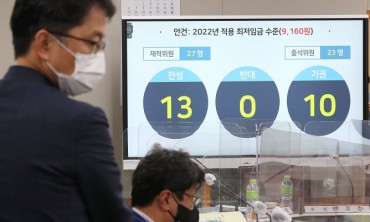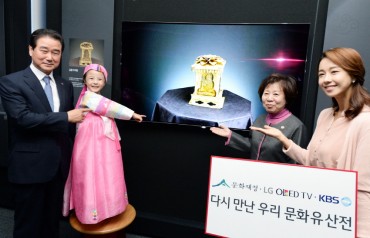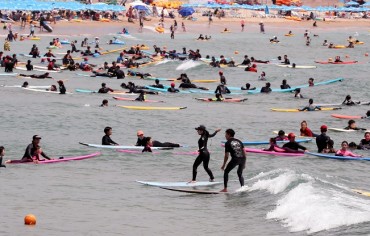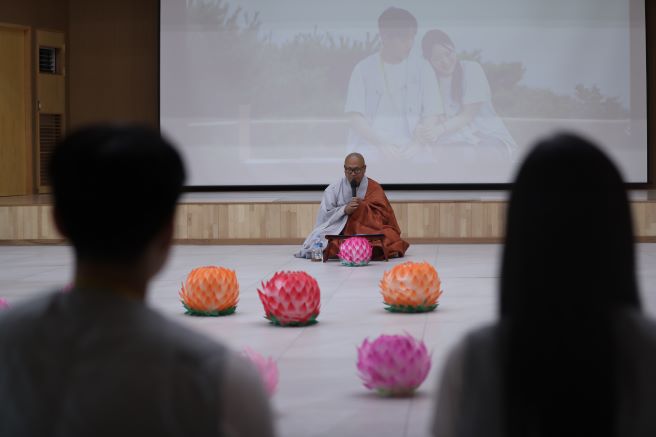
This contemporary matchmaking program, organized by the Jogye Order of Korean Buddhism’s social welfare foundation, has rapidly gained popularity since rebranding last year, taking inspiration from a hit dating show. (Yonhap)
YANGYANG, Aug. 11 (Korea Bizwire) – In a unique blend of tradition and modern social initiatives, a matchmaking program at a Buddhist temple in South Korea drew the attention of high-ranking government officials focused on the country’s demographic challenges even before it was announced that this iteration of the event had been the most successful yet.
The program, titled “I’m Going to the Temple,” took place at Naksansa Temple in Yangyang, Gangwon Province, coinciding with Chilseok, a traditional holiday celebrating the annual meeting of two celestial lovers in Korean folklore.
This contemporary matchmaking program, organized by the Jogye Order of Korean Buddhism’s social welfare foundation, has rapidly gained popularity since rebranding last year, taking inspiration from a hit dating show.
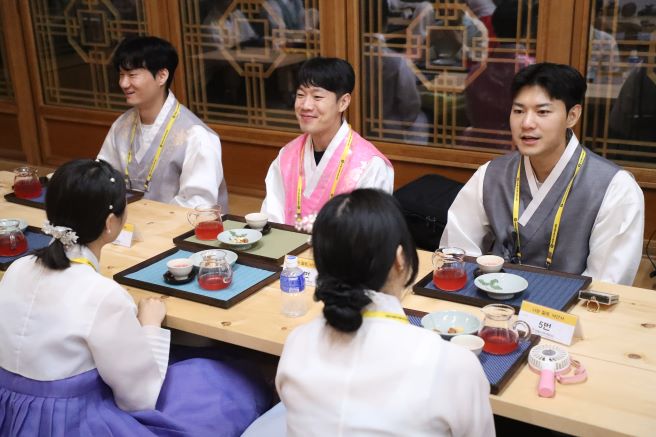
The event was an unprecedented success, with 12 of the 20 participants matching up for a 60% success rate. (Yonhap)
Naksansa, which is renowned for its breathtaking views of the East Sea and its abundance of cultural treasures, served as the backdrop for this unique two-day retreat.
The temple is one of South Korea’s three major seaside sites dedicated to Avalokitesvara, the Bodhisattva of Compassion, alongside Boriam Temple in Namhae and Bomunsa Temple on Ganghwa Island.
The retreat, which was held on August 9 and 10, attracted an overwhelming response from single South Koreans in their 30s. With only 20 spots available – 10 for each gender – the event saw fierce competition, with 701 men and 773 women applying. This translates to a remarkable ratio of 70.1 to 1 for men and 77.3 to 1 for women.
Participants engaged in a variety of activities, including temple visits, educational sessions on South Korea’s low birth rate issue, dating workshops, and recreational events such as dinner dates and one-on-one tea conversations.
In a nod to the Chilseok tradition, attendees also donned traditional Korean attire, embodying the roles of the legendary lovers Gyeonwu and Jiknyeo.
The event was an unprecedented success, with 12 of the 20 participants matching up for a 60% success rate.
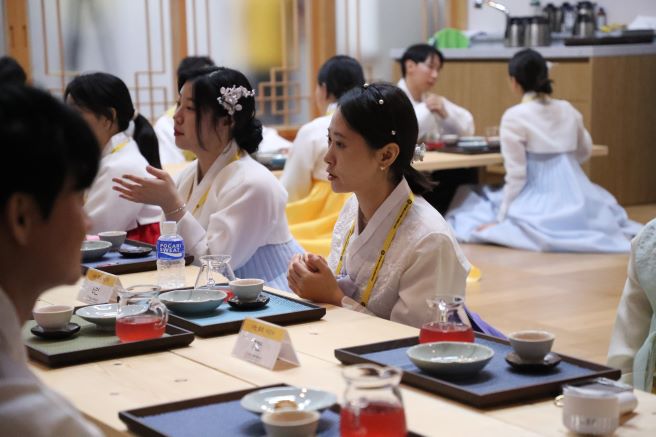
The retreat, which was held on August 9 and 10, attracted an overwhelming response from single South Koreans in their 30s. (Yonhap)
One of the successfully matched participants, identified as Jiknyeo No. 3, described the experience as an intense period of getting to know one another.
“It was a fierce 24 hours of twenty people with diverse careers and personalities learning about each other,” she said. “It’s amazing how we could find our match in such a short time, proving the saying that it takes just three seconds to form a first impression.”
Another participant, Gyeonwu No. 5, expressed his satisfaction with the outcome: “I’m fortunate to have met someone with whom I share great conversation and many commonalities. I hope to develop this precious connection into a lifelong relationship.”
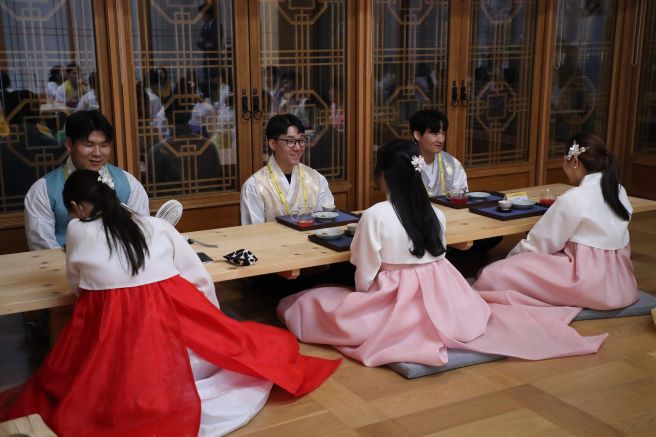
With only 20 spots available – 10 for each gender – the event saw fierce competition, with 701 men and 773 women applying. (Yonhap)
The event’s significance in addressing South Korea’s demographic concerns was underscored by the presence of Joo Hyung-hwan, vice chairman of the Presidential Committee on Ageing Society and Population Policy.
Joo expressed both joy and a sense of responsibility, stating, “It’s heartening to see so many young people earnestly seeking connections, but it also reminds us of our duty.”
He emphasized the government’s role in facilitating marriage by removing obstacles faced by young adults. “Our task is to create a society where the answer to ‘Why have children?’ is simply ‘Because children bring happiness,’” Joo added, calling for collaborative efforts across religious, economic, and media sectors.
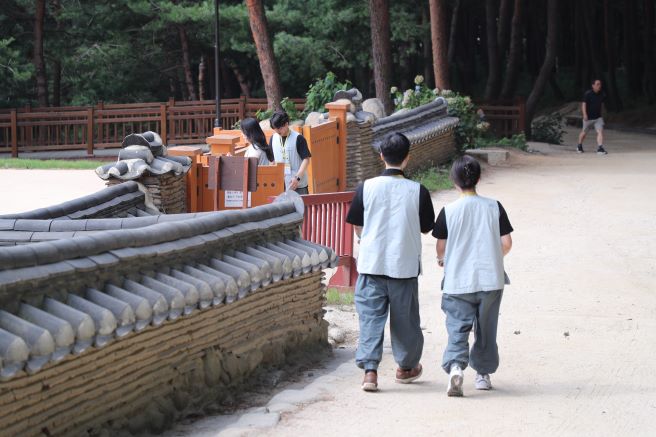
The event was an unprecedented success, with 12 of the 20 participants matching up for a 60% success rate. (Yonhap)
The “I’m Going to the Temple” program, which began in 2012 as “Meeting Temple Stay,” received a presidential commendation last month for its contributions to addressing the country’s low birth rate.
The foundation plans to host another event this fall at Baegyangsa Temple in South Jeolla Province, with a year-end alumni gathering also in the works.
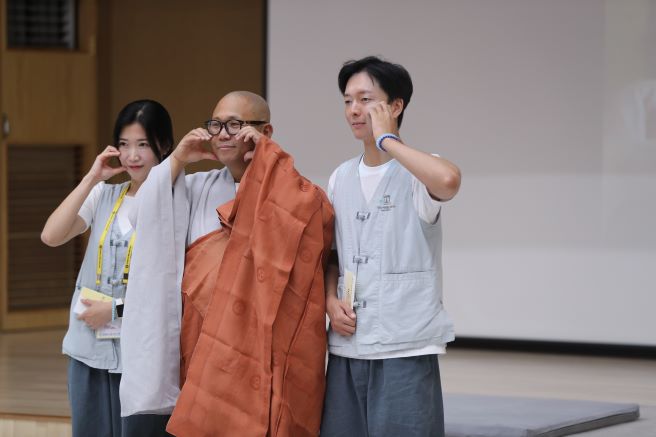
This contemporary matchmaking program, organized by the Jogye Order of Korean Buddhism’s social welfare foundation, has rapidly gained popularity since rebranding last year, taking inspiration from a hit dating show. (Yonhap)
Lina Jang (linajang@koreabizwire.com)




